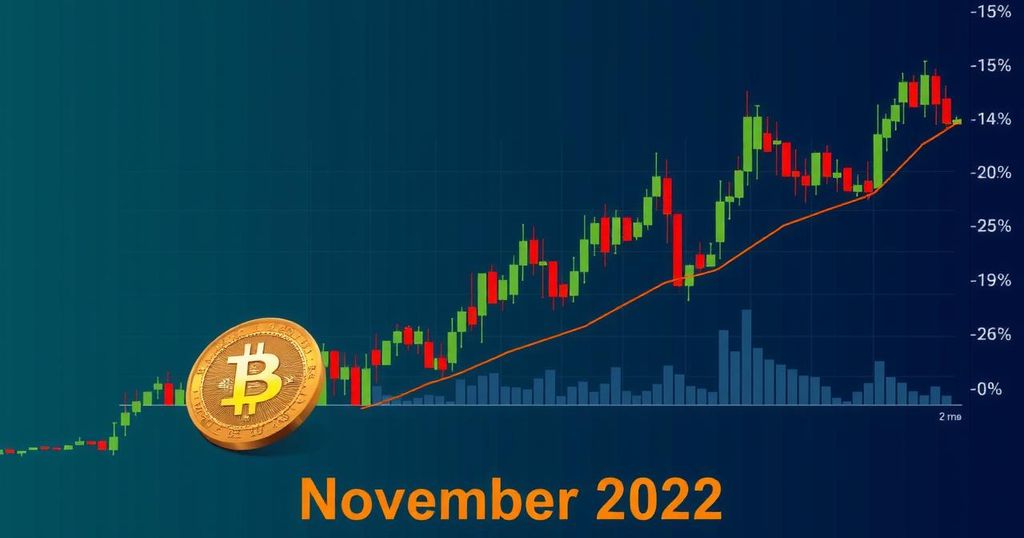Analysis of Bitcoin’s Recent Price Decline and Its Influencing Factors
Bitcoin’s price has experienced a decline of over 3% following a recent peak. Contributing factors include shifting crowd sentiment, increasing open interest in futures, and the implications of options expiration. Future expectations hinge on global liquidity and upcoming elections that may affect Bitcoin’s price trajectory amid growing altcoin activity.
On Monday, Bitcoin (BTC) is observing a price adjustment, having recently peaked at approximately $66.5K last Friday. Over the past three days, the cryptocurrency has experienced a decline of more than 3%, settling around $64.5K during the mid-London trading session. Following the global economic shifts noted in September, Bitcoin displayed a remarkable recovery over the past month, achieving an increase of over 25% from a correction low of $52.6K earlier in the month. Several factors are currently contributing to the bearish sentiment surrounding Bitcoin. Firstly, crowd sentiment, which had previously been influenced by fears of further cryptocurrency capitulation, has shifted positively as whale investors, particularly in U.S. spot Bitcoin ETFs, have increased their accumulation activities. Recent on-chain data indicates that these ETFs have seen over $1.9 billion in cash flows over the past three weeks. While Bitcoin’s price rallied impressively alongside the rising gold market, there is speculation from Santiment that market behavior often contravenes prevailing crowd expectations. Further complicating the scenario is the overheated futures market, particularly as traders navigated the approach of the $8 billion Bitcoin options expiration during the weekend. Historically, such expirations have been associated with increased price volatility. Additional analysis from CryptoQuant indicated an increase in Bitcoin’s Open Interest market to over $19 billion. This metric, when exceeding $18 billion, has historically correlated with declines in Bitcoin’s price. Looking ahead, as global liquidity is anticipated to rise, there is optimism regarding a steady increase in Bitcoin’s price. The upcoming U.S. general elections in 2024 are also expected to serve as a bullish factor, following historical trends. Nevertheless, the surge in altcoins, notably led by Ripple’s XRP, may precipitate what analysts refer to as an ‘altseason,’ potentially leading to a decrease in Bitcoin’s market dominance.
Bitcoin, a leading cryptocurrency, sees daily price fluctuations influenced by various market factors. Recent trends suggest that the cryptocurrency could stabilize or even grow, supported by global economic conditions and investor behavior. The dynamics of the options and futures markets play a significant role in the price movements of Bitcoin, as seen during periods of market expiration and increased open interest. Understanding these elements is crucial for comprehending the overall outlook of Bitcoin and its interaction with broader market trends.
In summary, Bitcoin’s recent price drop can be attributed to several interrelated factors, including shifts in crowd sentiment, market conditions surrounding options expiration, and a notably heated futures market. Despite the current bearish sentiment, there exists potential for recovery fueled by increasing global liquidity and the impending U.S. general elections. Additionally, the rise of altcoins may indicate significant changes within the cryptocurrency landscape, influencing Bitcoin’s market dominance in the short term.
Original Source: coinpedia.org








Post Comment